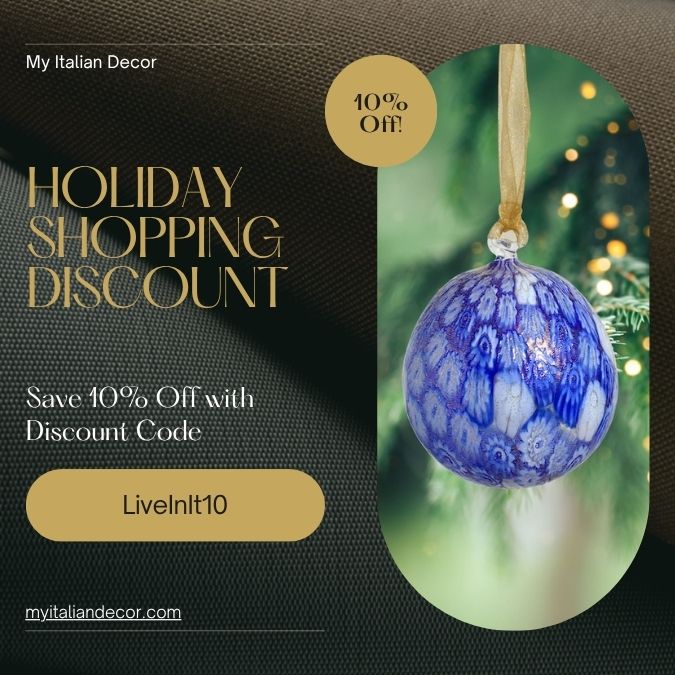Lights, markets, and festive cheer. Christmas in Italy is all this and more. From north to south, the country is dotted with ancient monasteries and convents hidden behind thick walls. Here, the holiday atmosphere is more intimate but no less joyful. Where the air is filled with the scent of herbs and must, and church bells mark the passing hours, panettone, Italian wine, and countless other delicacies are born, all made according to recipes handed down through generations.
Many of the traditional desserts that still take center stage on Italian Christmas tables were born in monastic kitchens. Likewise, monastic cellars are the cradle of products of exceptional quality, such as liqueurs, beers, and above all, wines.
What better occasion than the Christmas holidays to embark on a journey to discover a world that sometimes is still unexplored?
Panettone and other Christmas desserts

Is there a sweeter sin than gluttony? Probably not, but during Christmas it’s perfectly acceptable to give in to temptation, especially when the sweets are lovingly prepared by monks and nuns. From age-old gestures that sometimes trace back to the dawn of time, come delicious creations that also make for unique Christmas gifts.
To explore this exquisite tradition, we should start with the cloistered nuns of Southern Italy. These women, masters in the art of pastry-making, once prepared sweets as gifts for benefactors and noble families.
Basically, all of Naples’ traditional Christmas pastries, like struffoli, roccocò, and mustaccioli, were born in convents. The nucatoli di Natale are equally delicious: they are the almond pastries that the nuns of the Monastery of San Benedetto make in Catania, together with biscuits scented with citrus and cloves. Still in Sicily, the Monastery of Santa Caterina d’Alessandria in Palermo is now open to visitors and has a pastry shop fully active even today. Here, the nuns handcraft an incredible variety of traditional Christmas sweets, which they sell to support the monastery itself.
Even in convents where strict cloistering is observed, the kitchens are never idle. Famous examples include the Christmas sweets of the hermit Poor Clares of Fara in Sabina or the Benedictine nuns of Lecce. And even if the rules forbid contact with the outside world, the exchange of sweets can take place thanks to the revolving wheels once used to receive abandoned infants without opening the doors. Similarly, the Cistercian nuns of the Monastery of the Holy Trinity in Cortona produce a rich variety of desserts, especially during the Christmas season.
Anyway, the undisputed king of Italian Christmas tables is, of course, panettone. Though typical of northern Italy, it is now popular all over the country. Monasteries often have their own handmade version of this delicious cake. In Piedmont, at the Monastery of San Biagio, panettone is made by people facing social hardship. In the Monastery of Santa Chiara in Potenza, the handmade panettone is among the highlights of the festive season. It sells out in no time!
Where Italian wine is born, among silence, vineyards, and prayers

Just like Christmas sweets, fine Italian wine has its roots in monastic cellars. Here, since the Middle Ages, monks have regarded winemaking as a divine gift.
While in Italy there’s not an actual “Christmas wine,” everybody saves the best bottles for the holidays. Whether white, red, sparkling, or still, no festive table is complete without a bottle (or two!) of wine. And although beer is less common, many monasteries also boast ancient and important brewing traditions.
Listing all Italian monastic wineries would be impossible, but a few examples stand out. The Abbey of Novacella in South Tyrol is one of them. The Augustinian monks not only produce excellent wines but also open their cellars for tastings and sales.
The magnificent Abbey of Praglia, near Padua, continues an ancient tradition thanks to its own vineyards and its vaulted cellars. The wines made by the monks within the monastery walls make also prestigious Christmas gifts. Many other monasteries have their own vineyards, though. Tuscany’s Benedictines of Montecassino and the Camaldolese monks of the Hermitage of Camaldoli also produce wine from their own grapes.
True Italian wine fans should also visit the Abbey of Fossanova in Priverno because it hosts a themed event bringing together more than 30 monastic wineries from Italy and abroad.
Last but not least, the Abbey of Tre Fontane in Rome holds a unique distinction: it produces the only officially recognized Trappist beer in Italy.
Herbal Elixirs and Liqueurs

Visiting a monastery during the holidays means escaping the festive chaos to find peace and spirituality. Furthermore, exploring the herbal workshops, is the perfect chance to know the places where ancient wisdom and devotion intertwine.
Here, as in centuries past, monks and nuns craft herbal teas, ointments, elixirs, and a wide array of spirits, bitters, and digestive liqueurs. Many of these products become popular during the holiday season, and it’s easy to guess why. In Italy it is traditional to end a rich meal with a digestive liqueur, the so-called ammazzacaffè. It goes without saying that after a festive lunch, everybody is more inclined to respect the tradition.
One famous example is the Amaro di Camaldoli, created in the Tuscan hermitage of the same name. The monastery’s historic pharmacy continues the medieval practice of collecting and processing plants and roots. Among its specialties are rhubarb bitters, perfect as digestives. Same goes for Laurus, an herbal liqueur made from laurel and twelve other herbs, according to a secret monastic recipe.
The magnificent Abbey of Chiaravalle in Lombardy, founded in 1135, produces and sells artisanal products since then. Bitter liqueurs, grappa and digestifs are among the cornerstones of their tradition. The Abbey of Vallombrosa too, is home to monks who make gentian, mountain pine, and alpine herb liqueurs, sold in the monastery’s shop, in Tuscany.
Finally, another huge classic of the holiday season is rosolio. This rose-petal liqueur originated in southern Italian convents during the Renaissance, but the regional variants are countless. At the Monastery of Santa Scolastica in Subiaco, for instance, an excellent cherry-flavored version is still produced today.


